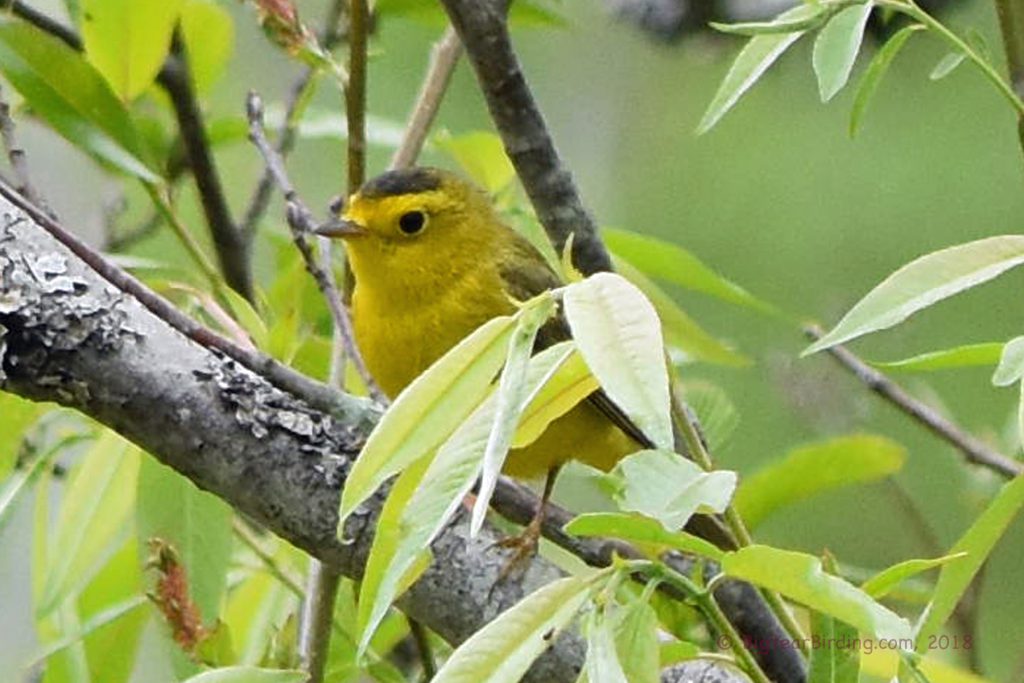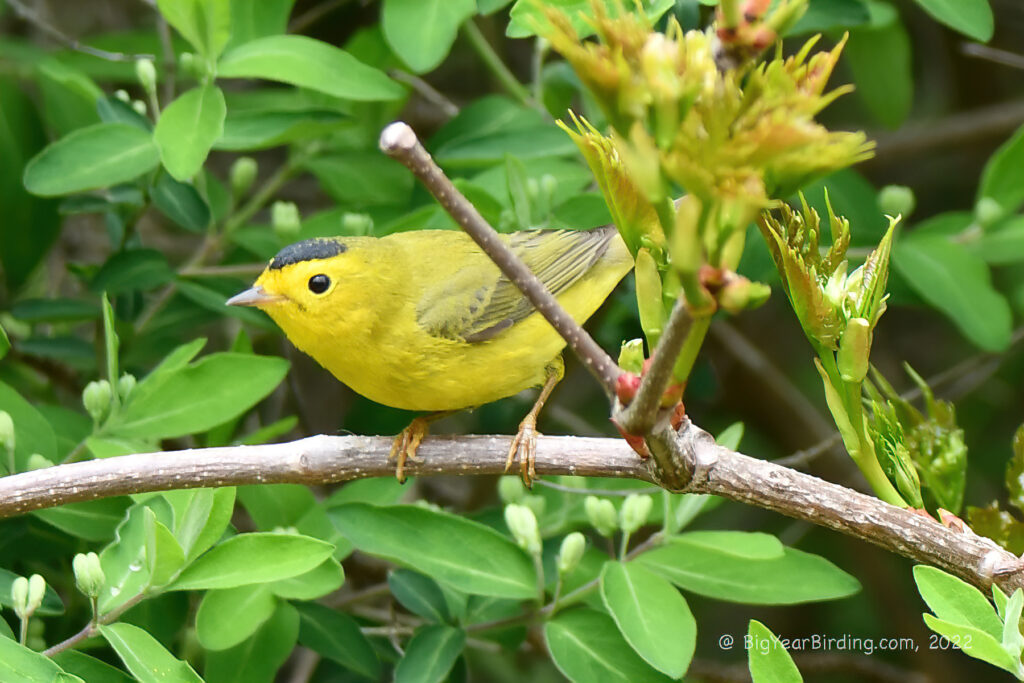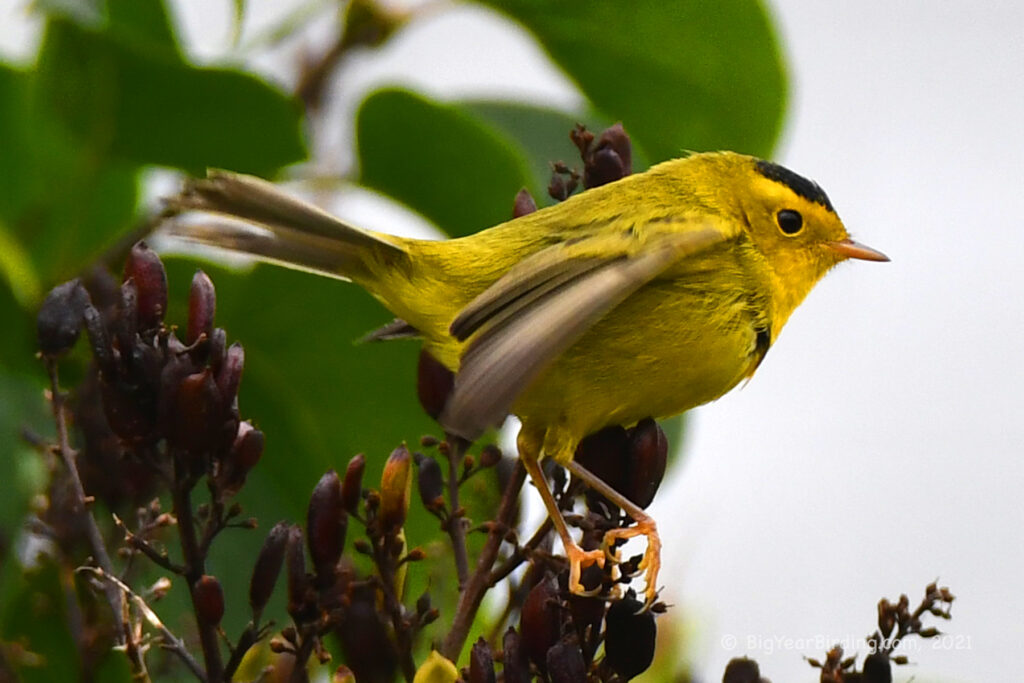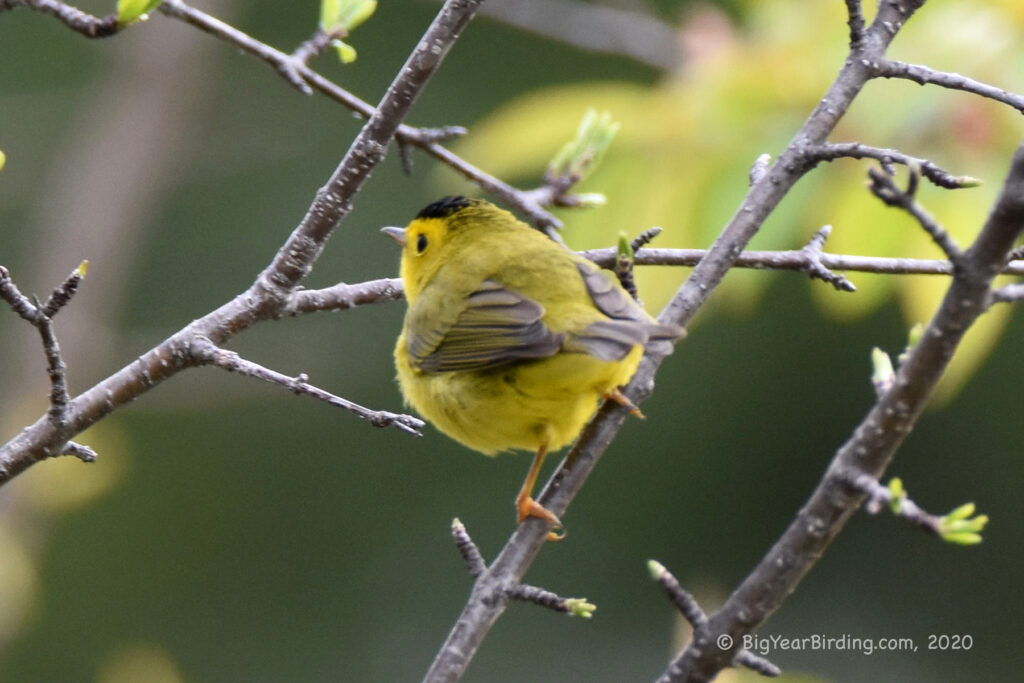
Wilson’s Warbler (Cardellina pusilla) is a small, brightly colored songbird found in North America. It is one of the smallest warblers, measuring only 4.3-4.7 inches in length, with a wingspan of about 6.7 inches. Adults typically weigh around 0.2-0.3 ounces, making them some of the lightest birds in the warbler family.

The male Wilson’s Warbler is easily recognizable by its bright yellow plumage on the throat, chest, and underparts, and a black cap and bib on its head. The bird’s wings and back are an olive-green color, and it has a distinctive black eye patch. Females have a similar appearance but with a duller plumage and a gray crown. The juveniles are also duller and lack the black cap.
Wilson’s Warblers breed in the western and northern parts of North America, including Alaska, western Canada, and the western United States. They migrate to the southern parts of the United States, Mexico, and Central America for the winter. During migration, Wilson’s Warblers can be found in a variety of habitats, including forests, shrubs, and wetlands.
In terms of behavior, Wilson’s Warblers are active and energetic birds, often flitting through the vegetation and perching on branches and twigs. They feed on insects and spiders, which they catch on the wing or pluck from leaves and branches. During breeding season, males can be heard singing a high-pitched, buzzy song from high perches.

While Wilson’s Warblers are not considered threatened, their populations have declined in some areas due to habitat loss and fragmentation. As such, conservation efforts are in place to protect the bird’s habitat and increase its population. Bird watchers and nature enthusiasts can observe this charming bird during migration, making it a beloved species among birding communities.

